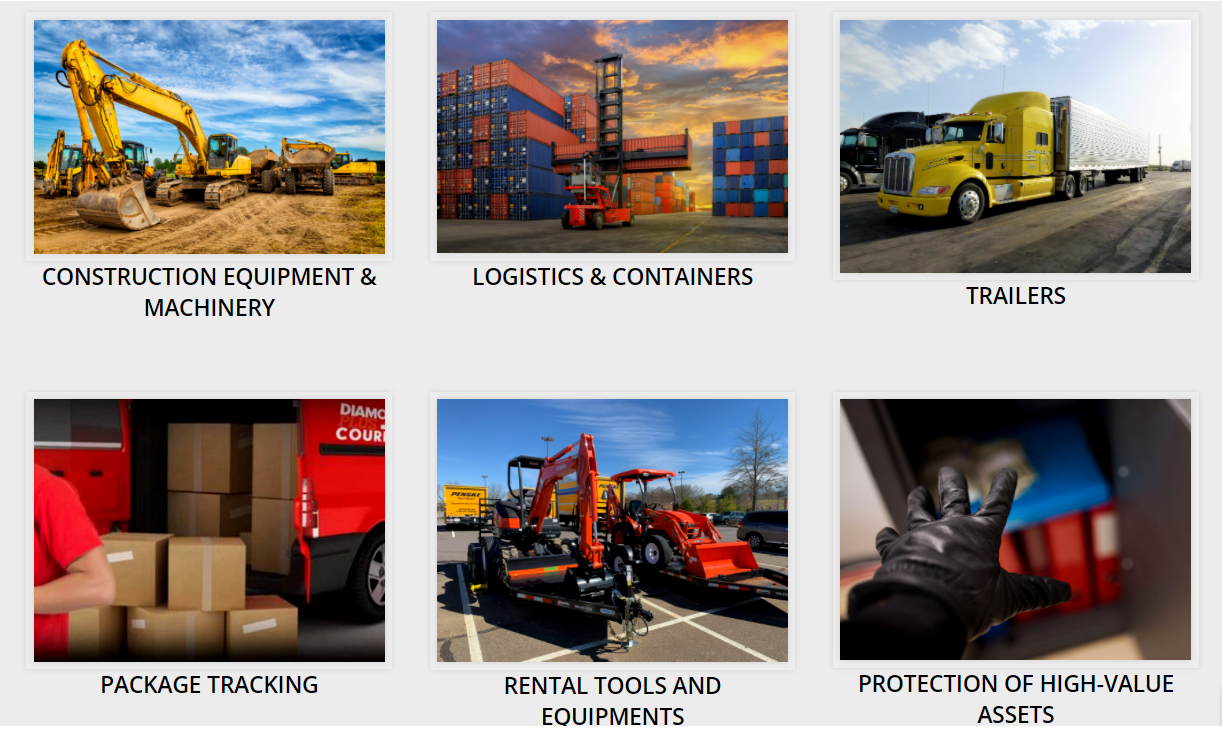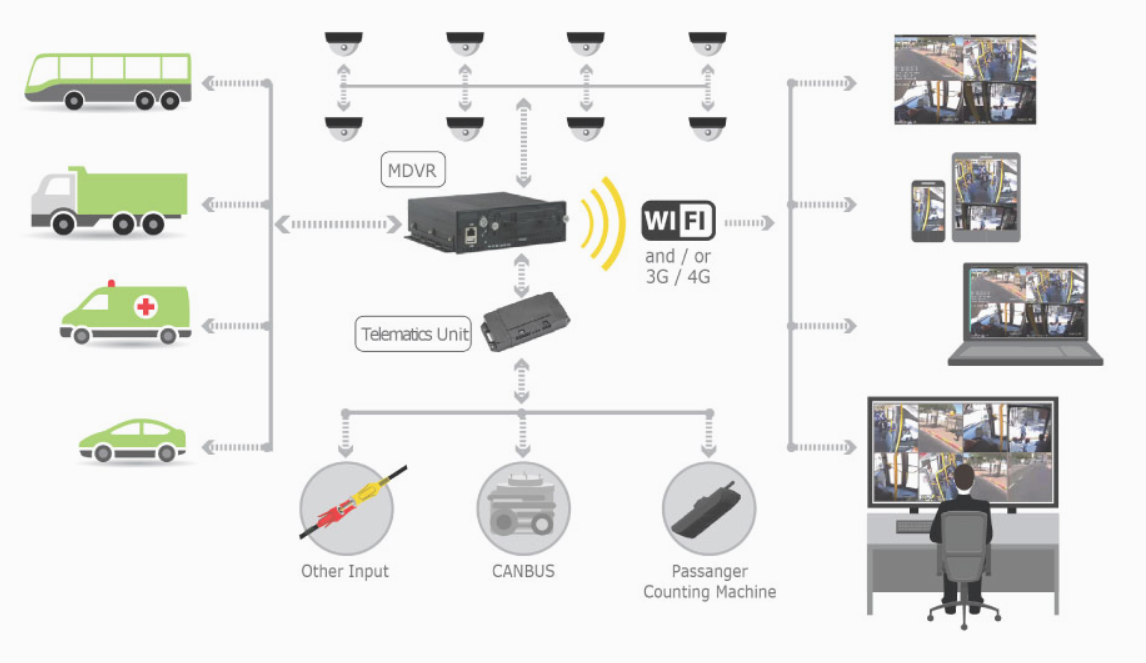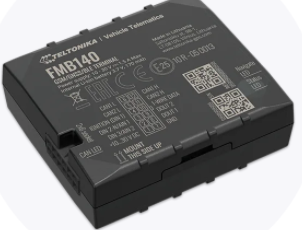Fleet telematics gathers a range of data using Global Positioning System (GPS) technology, sensors and vehicle engine data to provide fleet operators with the information they need to manage their fleet.
- Global Positioning System (GPS) technology – powers live visibility into vehicle location, speed and movement within points of interest through geofencing.
- Sensors – enable the capture of data on driver activity, including aggressive acceleration, harsh braking and erratic cornering, but sensors can be used to monitor any in-vehicle activity such as a door opening, tail lift raising and even trailer temperature.
- Engine diagnostics – these solutions pull data directly from the in vehicle diagnostics system and are primarily used to gather real time data on fuel efficiency and vehicle odometer readings that help power digital fleet maintenance solutions.
- Passenger Counting Systems to enhance passenger boarding and disembarking accountability and security.

HOW TELEMATICS WORKS
The data is temporarily stored in a telematics device that in installed in each vehicle, and is then transmitted over private cellular networks to secure servers. It is this central data hub that enables fleet management software to provide easy-to-understand visualisations that help fleet managers optimize their operation.
BENEFITS OF VEHICLE TELEMATICS
There are a number of areas where telematics systems can benefit fleets. Telematics systems do more than just keep fleet managers abreast of the location of vehicles. They greatly streamline communication, job dispatch and routing, and also record and transmit information on whether individual vehicles are in motion or stationary, their engine performance (including power-up, shutdown, idling or malfunctions), vehicle speed, driver conduct and more besides. This benefits business in the following ways:
Improved service: Through knowing the exact location of each vehicle in the fleet at any time, dispatchers can make constant routing adjustments responding to changes in the traffic, vehicle availability or weather conditions. In this way, they can switch resources around and ensure that deliveries reach customers when they need to. In addition, they are also able to keep clients informed as to their delivery’s estimated time of arrival, helping to increase customer satisfaction.
Lower fuel and maintenance costs: Through more efficient routing, the overall amount of miles travelled can be reduced, which reduces fuel consumption as well as carbon emission (and the fleet’s overall carbon footprint). As well as reducing wear and tear on vehicles, telematics can also provide warnings about mechanical problems and impending maintenance tasks. This all serves to cut the risk of breakdowns and consequent disruption.
Lower administrative costs. Telematics also greatly simplifies compliance and administration, through digital tachograph data as well as automated mileage expense reports. The latter can be used to reduce the administrative burden in addition to supporting tax compliance.
Improved safety: Telematics can provide drivers with enhanced safety, for example via its location tracking allowing for quick emergency aid where it is needed. Telematics is more generally known to improve driver behaviour. In-cab feedback can alert drivers to dangerous conduct, and telematics data can
Reduce Theft : Fuel theft and improper submission of daily sales are a major headache for taxi, bus and fleet owners. with our vehicle telematics, Fuel can be monitored in real time such that filling of fuel and syphoning of fuel can trigger alert in our telematics system to forward alert on how much fuel were purchase or stolen a given time. Also be used to develop individual driver training and development programmes. The results can be striking: one 900-vehicle fleet made remarkable improvements in safety after adopting telematics, including a 97% reduction in speeding and a 47% reduction in crashes as well as savings in both fuel spend and maintenance costs.
RELATED PRODUCTS
APPLICATIONS




